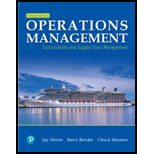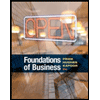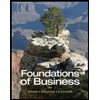
Question
The Winter Park Hotel☆
Lori Cook, manager of the Winter Park Hotel, is considering how to restructure the front desk to reach an optimum level of staff efficiency and guest service. At present, the hotel has five clerks on duty, each with a separate waiting line, during peak check-in time of 3:00 P.M. to 5:00 P.M. Observation of arrivals during this period shows that an average of 90 guests arrive each hour (although there is no upward limit on the number that could arrive at any given time). It takes an average of 3 minutes for the front-desk clerk to register each guest.
Ms. Cook is considering three plans for improving guest service by reducing the length of time that guests spend waiting in line. The first proposal would designate one employee as a quick-service clerk for guests registering under corporate accounts, a market segment that fills about 30% of all occupied rooms. Because corporate guests are preregistered, their registration lakes just 2 minutes. With these guests separated from the rest of the clientele, the average time for registering a typical guest would climb to 3.4 minutes. Under this plan, no corporate guests would choose any of the remaining four lines.
The second plan is to implement a single-line system. All guests could form a single waiting line to be served by whichever of five clerks became available. This option would require sufficient lobby space for what could be a substantial queue.
The use of an automatic teller machine (ATM) for check-ins is the basis of the third proposal. This ATM would provide about the same service rate as would a clerk. Because initial use of this technology might be minimal, Cook estimates that 20% of customers, primarily frequent guests, would be willing to use the machines. (This might be a conservative estimate if guests perceive direct benefits from using the ATM, as bank customers do. Citibank reports that some 95% of its Manhattan customers use its ATMs.) Ms. Cook would set up a single queue for customers who prefer human check-in clerks. This line would be served by the five clerks, although Cook is hopeful that the ATM will allow a reduction to four.
b. Which option do you recommend?
Want to see the full answer?
Check out a sample textbook solution
Chapter D Solutions
Mylab Operations Management With Pearson Etext -- Access Card -- For Operations Management: Sustainability And Supply Chain Management (13th Edition)
- Leadership and people Earlier this year, Pick n Pay actioned the first priority of the plan: the introduction of a new, simplified and seasoned leadership team with proven track records. The team has already implemented strengthened structures, including establishing regional trading areas with local decision-making, with clear sight of strong long-term succession Each operating region now has a regional buying team and store management team in place to meet specific customer needs particular to that region, while also increasing staff training and productivity for an overall improved store experience. Reset the store estate To create a more sustainable supermarket business, the Group is resetting its store estate to minimise losses by creating a smaller but more profitable Pick n Pay store estate. The plan is to leverage the strength of its multi-format model with strategic conversions to lift store profitability: selected Pick n Pay stores will be converted to Boxer, where customer…arrow_forwardQuestion 3 (25 Marks) Elaborate on how Pick n Pay could use information technology and ERP systems across the company and their suppliers to improve their operating model? Question 4 (25 Marks)arrow_forwardQuestion 2 (25 Marks) Discuss how you would "reset the store estate" to remain competitive and relevant in the market? Question 3 (25 Marks)arrow_forward
- What should leaders do after conducting an employee survey? take immediate action on results take at least 6 months to review the results to make sure the leader understands them review them immediately, but do not take action right away keep results confidential from employeesarrow_forwardOne of the best ways to encourage teamwork is to: continually promote from outside of the department recognize employees who focus on their personal performance goals only reward employees who complete their own tasks and also assist with problems outside of their department discuss individual performance issues at staff meetingsarrow_forwardWhat can happen if a leader doesn't encourage teamwork? team members will support each other more the environment can become overly competitive and hostile turnover will descrease team members become more motivatedarrow_forward
- understand 4 Classwork LSC Drag the name of the figure of speech to its example. 12 February 2025 personification Onomatopoeia Simile Metaphor Hyperbole Onomatopoeia metaphor 1. He tried to help but his legs were wax. Metaphor 2. The man flights like a lion on the soccer field. Simile 3. The books fell on the table with a loud thump. Onomatopoeia 4. Rita heard the last piece of pie calling her name. Personification 5. The rustling leaves kept me away. Personification 6. Kisses are the flowers of affection. 7. He's running faster than the windarrow_forwardAnswer the question in the attached photo and draw the network that interprets the dataarrow_forwardnot use ai pleasearrow_forward
- oimmnjjjharrow_forwardSummarize the ethical dilemma encountered in Walmart Inc. Which of Kohlberg's stages of moral development is represented? Is there other theories of moral development that better describes the example? Postulate the (hypothetical or real) best- and worst-case outcomes of this dilemma. Is it agreeable with the selection of Kohlberg's stages of moral development for their examples? Is there another theory of moral development that would better describe their examples?arrow_forwardFour-drive theory recommends that companies must keep fulfillment of the four drives in balance. What is this “balance” and why is it important? Can you Give an example (real or hypothetical) of how a company maintains balanced drive fulfillment. Also describe a company that does not provide this balance, including the consequences of this imbalance on employees’ attitudes and behavior. Thank youarrow_forward
 Practical Management ScienceOperations ManagementISBN:9781337406659Author:WINSTON, Wayne L.Publisher:Cengage,MarketingMarketingISBN:9780357033791Author:Pride, William MPublisher:South Western Educational Publishing
Practical Management ScienceOperations ManagementISBN:9781337406659Author:WINSTON, Wayne L.Publisher:Cengage,MarketingMarketingISBN:9780357033791Author:Pride, William MPublisher:South Western Educational Publishing Foundations of Business (MindTap Course List)MarketingISBN:9781337386920Author:William M. Pride, Robert J. Hughes, Jack R. KapoorPublisher:Cengage Learning
Foundations of Business (MindTap Course List)MarketingISBN:9781337386920Author:William M. Pride, Robert J. Hughes, Jack R. KapoorPublisher:Cengage Learning Foundations of Business - Standalone book (MindTa...MarketingISBN:9781285193946Author:William M. Pride, Robert J. Hughes, Jack R. KapoorPublisher:Cengage Learning
Foundations of Business - Standalone book (MindTa...MarketingISBN:9781285193946Author:William M. Pride, Robert J. Hughes, Jack R. KapoorPublisher:Cengage Learning



